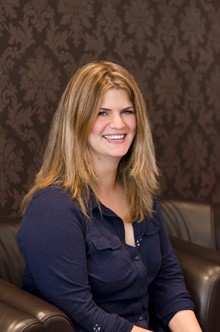How to build a library of construction photos people actually want to see
Images are emotive, images are persuasive, and images sell. In a time-poor world where you have just over 8 seconds[1] to grab the attention of a potential customer, you can’t afford to overlook images as a super-quick way to convey a message. Building a library of compelling images takes a little time and thought.
Quantity
1) Think about photo opportunities. Consider how to present your business visually and what images you need. Brainstorm ideas for photo opportunities. As you go about your day-to-day activities be mindful of anything that may make an attractive photo.
2) Be practical. A few well-composed shots on your phone can be fine for quick tweet but an image of a new product for a glossy brochure may require a professional. Remember that print images need to have a resolution of at least 300dpi (dots per inch), and digital images may need to be saved in a certain size (measured in pixels) to fit a specific space on a website.
3) Recruit others to take photos for you. If you are a manufacturer or fabricator, encourage your installers and users to take photos of their projects or installations (before and after shots are particularly powerful)– perhaps provide an incentive such as a prize or money off their next order if they buy direct.
4) Use images wisely. You might have commissioned that great shot for a brochure but that doesn’t stop it being great for advertising, your website, social media feeds, in a video, or with a piece of PR.
5) Make your photos accessible. Be sure to gather all your photos in a central library, clearly labelled in well organised folders so you can easily locate them.
Quality
Thanks to smartphones with ever-improving cameras, it’s never been easier to take a decent photograph. Here are my tips for taking construction photos that are more ‘ta-da!’ than ‘blah’…
Get the lighting right. If you’re outside, keep the sun behind you so the subject gets the maximum light available. Avoid shooting in the middle of the day though, as the sunlight can be very ‘hard’ - creating shadows that could distract or distort. Indoors, open windows and doors to maximise the natural light and switch on electric lights wherever possible.
Capture people. The human element helps and an image of a product in use says a lot more than a shot of the product in isolation.
Take stunning portraits. Focus on the eyes of your subject and use your camera’s portrait setting to automatically capture the right skin tone.
Avoid wonky perspective. When shooting a building, try to get to a higher position so you are shooting straight-on rather than up.
Focus on details. Even the plainest piece of hardware can be interesting if you focus in on its features. Also try looking for interesting patterns or an unusual juxtaposition.
Capture the action. Machinery is generally more interesting in action than static and ‘candid’ photos of people who don’t know the camera is on them make for more natural, authentic images than the usual posed shots.
Try a different viewpoint. Try taking photos from different heights: a higher angle will make the subject look smaller and allow you easily to capture background detail; face-to-face or straight on makes an engaging shot; low angle is great for emphasising toughness or making things look epic; and a really low or ‘bug’s eye view’ adds a unique perspective.
De-clutter the scene. The subject of your photo should be the star of the show – cast a critical eye over your surroundings: have all the unnecessary materials, tools, and rubbish been cleared away?
Get close. Make sure you zoom in close enough to ensure the viewer focuses on the right area. When using a phone camera, move physically closer to your subject if you can, as using the zoom can degrade the image quality.
Use post-production tools to make your images pop. Inexpensive or free software such as Canva and PicMonkey allow you to change the exposure, tone and crop of a photo to make it more powerful. You can use filters too, so if colour is not important to an image, why not try a black and white filter to add drama?
[1] http://www.statisticbrain.com/attention-span-statistics/

Jane Evans, CIMCIG committee member and Director of construction specialist agency MRA Marketing looks at what visual to use with your marketing.